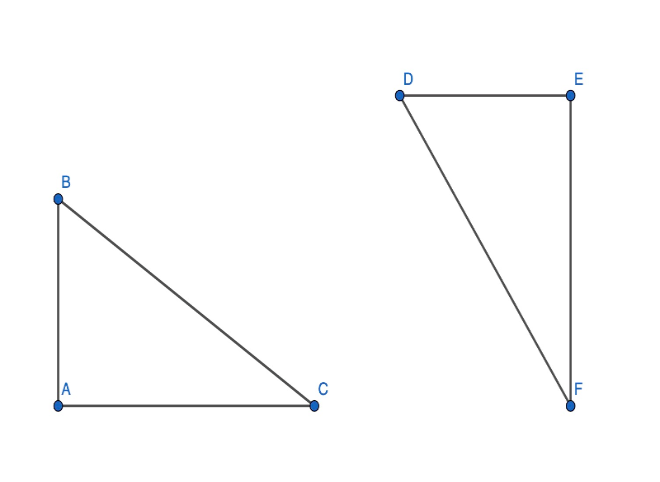Copy of "Ikaw na ba si Mr. Right?": Activity on Triangle Congruence Theorems
Hello!
Learning Competencies
Si Mr. Right ka ba?
What is Congruency?
SAS Postulate
SAS Simulation (Brezinski, n.d.-b)
ASA Postulate
ASA Simulation (Brezinski, n.d.-a)
SSS Postulate
SSS Simulation (Brezinski, n.d.-c)
Questions

Q1.
You know that side AB is proportional to side DE. You also know that side AC is proportional to side EF. This is the only given information. Can you use a postulate to prove that triangle ABC and triangle DEF are congruent? If so, which postulate can you use to prove that triangle ABC is congruent to triangle DEF? If not, why not?
Q2.
You know that the measure of angle ABC is equal to the measure of angle EDF. You also know that the measure of angle ACB is equal to the measure of angle EFD. You also know that the measure of angle BCA is equal to the measure of angle DEF. This is the only given information. Can you use a postulate to prove that triangle ABC and triangle DEF are congruent? If so, which postulate can you use to prove that triangle ABC is congruent to triangle DEF? If not, why not?
Q3.
You know that side AB is proportional to side DE. You also know that side AC is proportional to side EF. You also know that side BC is proportional to side DF. This is the only given information. Can you use a postulate to prove that triangle ABC and triangle DEF are congruent? If so, which postulate can you use to prove that triangle ABC is congruent to triangle DEF? If not, why not?
Q4.
You know that the measure of angle ABC is equal to the measure of angle EDF. You also know that the measure of angle ACB is equal to the measure of angle EFD. You also know that the side length of BC is equal to the side length of DF. This is the only given information. Can you use a postulate to prove that triangle ABC and triangle DEF are congruent? If so, which postulate can you use to prove that triangle ABC is congruent to triangle DEF? If not, why not?
Q5.
You know that the measure of angle ABC is equal to the measure of angle EDF. You also know that the side length of BC is equal to the side length of DF. This is the only given information. What piece/s of information is missing in order to prove the congruency of triangle ABC and triangle DEF using the SAS postulate?
Q6.
You know that the measure of angle ABC is equal to the measure of angle EDF. You also know that the side length of BC is equal to the side length of DF. This is the only given information. What piece/s of information is missing in order to prove the congruency of triangle ABC and triangle DEF using the ASA postulate?